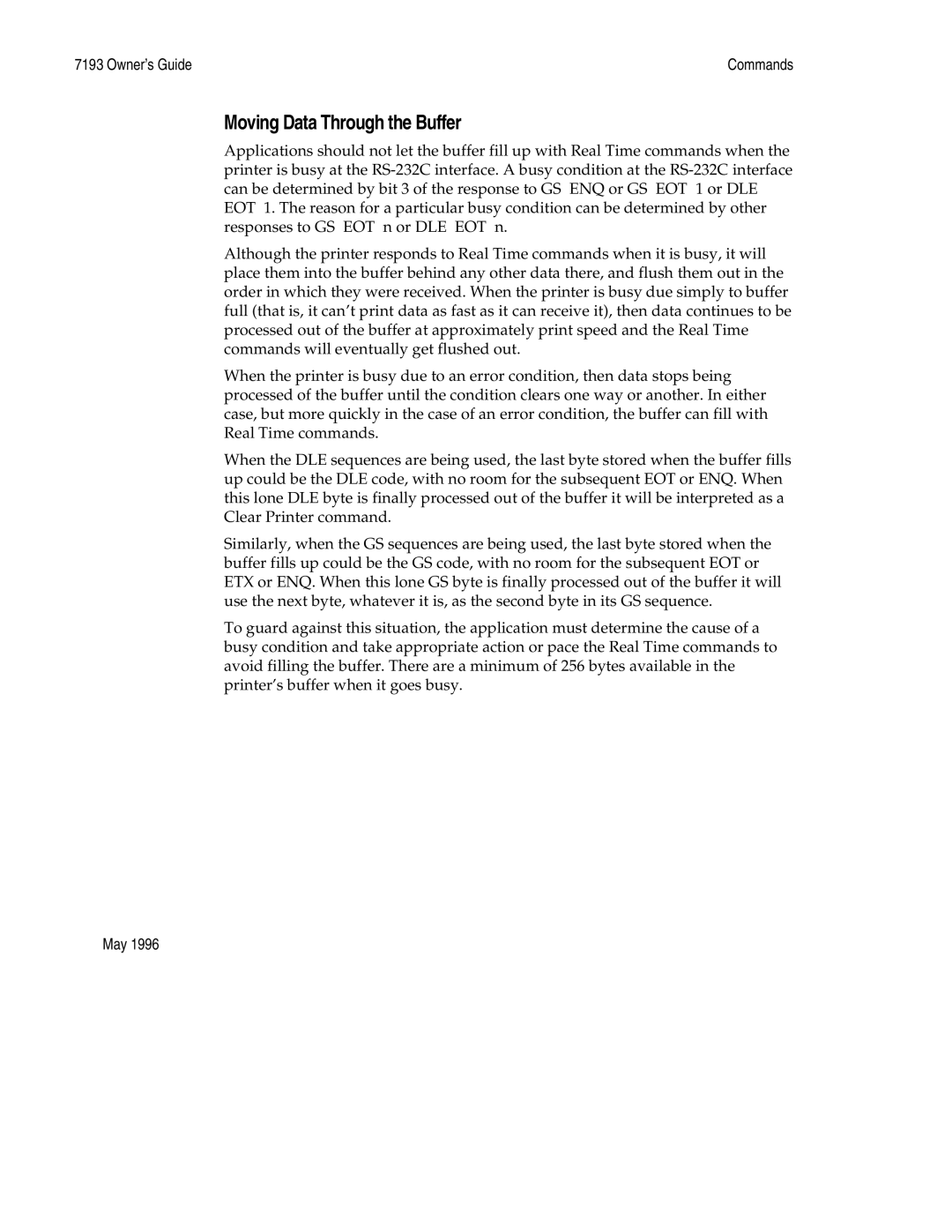7193 Owner’s Guide | Commands |
Moving Data Through the Buffer
Applications should not let the buffer fill up with Real Time commands when the printer is busy at the
Although the printer responds to Real Time commands when it is busy, it will place them into the buffer behind any other data there, and flush them out in the order in which they were received. When the printer is busy due simply to buffer full (that is, it can’t print data as fast as it can receive it), then data continues to be processed out of the buffer at approximately print speed and the Real Time commands will eventually get flushed out.
When the printer is busy due to an error condition, then data stops being processed of the buffer until the condition clears one way or another. In either case, but more quickly in the case of an error condition, the buffer can fill with Real Time commands.
When the DLE sequences are being used, the last byte stored when the buffer fills up could be the DLE code, with no room for the subsequent EOT or ENQ. When this lone DLE byte is finally processed out of the buffer it will be interpreted as a Clear Printer command.
Similarly, when the GS sequences are being used, the last byte stored when the buffer fills up could be the GS code, with no room for the subsequent EOT or ETX or ENQ. When this lone GS byte is finally processed out of the buffer it will use the next byte, whatever it is, as the second byte in its GS sequence.
To guard against this situation, the application must determine the cause of a busy condition and take appropriate action or pace the Real Time commands to avoid filling the buffer. There are a minimum of 256 bytes available in the printer’s buffer when it goes busy.
May 1996
